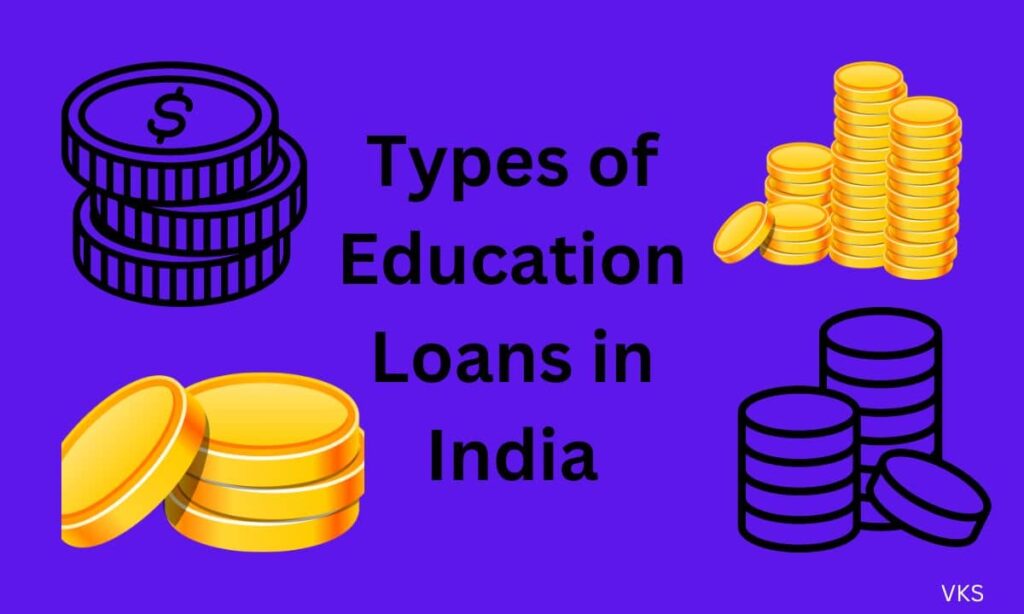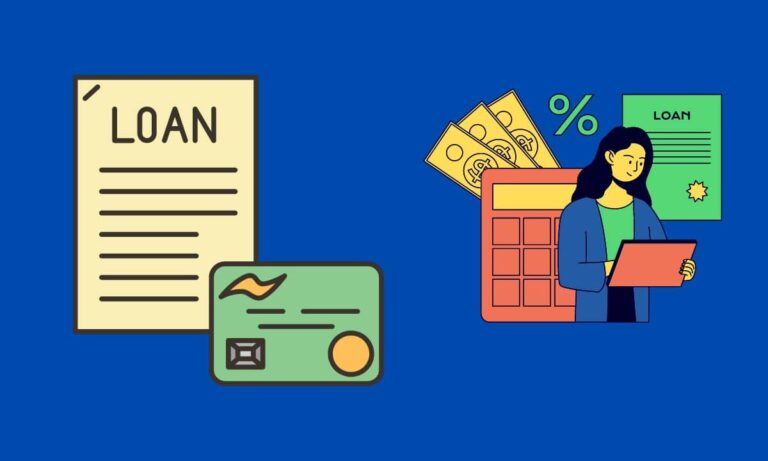Introduction
In a landscape where education’s importance is undeniably increasing, the rising cost of education is a significant concern for many.
Against this backdrop, we present to you an enabling route that many are finding incredibly helpful: Education Loans in India.
Ever found yourself questioning how you might finance your higher educational aspirations, especially when the possible avenues seem increasingly unaffordable?
Amid the plethora of available options, we find an answer in education loans. This vital solution plays an instrumental role in closing affordability gaps and making educational dreams a reality.
Join our journey as we navigate and simplify the complex world of education loans in India, breaking it down into palatable segments.
We aim to simplify this financial instrument that serves as a launchpad for countless individuals’ educational pursuits.
In this comprehensive series, we will unravel the intricacies associated with securing an education loan in India.
Additionally, it’s worth noting that the advent of student loan apps in India is revolutionizing the way students finance their education, rendering the process more manageable and accessible than ever before!
So, gear up, because we are only getting started on this illuminating journey.
Understanding the Basics of Education Loans in India

Education loans are funds borrowed to finance educational expenses, including tuition, books, and living costs. These loans are repayable, contrasting with scholarships or grants, which don’t need to be repaid.
Education loans are not merely about immediate financial aid but are a long-term commitment to one’s future.
Sources of Education Loans: Government vs. Private Banks
Government Loans
Government education loans are known for their favourable terms, such as low interest rates and lenient repayment schedules.
These loans often include additional benefits like interest subsidies, and supporting students who may not afford education costs otherwise.
Private Bank Loans & Online Student Loan Apps

Education loans from private banks in India offer flexibility and convenience with higher loan amounts and prompt processing, accommodating a diverse array of financial needs for students.
Though these loans may come with higher interest rates compared to government loans, they are crafted to match market trends and students’ urgent financial requirements.
To enhance accessibility and efficiency, private banks have integrated online student loan apps into their services.
These digital platforms are revolutionizing the education loan process with several key innovations:
Enhanced Accessibility: Leveraging the power of technology, online apps break down traditional application barriers, making it easier for more students to acquire education funding, especially those struggling with traditional banking.
Simplified Processes: Online platforms streamline the usually extensive paperwork, cutting down the time and effort spent on loan applications.
Adaptive Eligibility: Moving away from conventional credit assessments, these apps offer a broader, more inclusive approach, focusing on a student’s future potential rather than just financial history.
Informed Choices: The apps provide comparative insights into various loan options, empowering students to choose wisely based on detailed assessments of interest rates and repayment terms.
Private banks’ embrace of online solutions reflects a significant shift towards a more streamlined and student-friendly approach to financing education.
These digital tools are not separate entities but an integrated part of private banking, tailored to modernize and simplify securing educational loans in India.
Potential Challenges with Online Student Loan Apps
Reliability Concerns: Some apps may have inconsistent uptime, causing difficulties when service is needed most.
Security Risks: Protection of sensitive financial data is paramount, and any security lapses can lead to privacy breaches.
Internet Dependency: A robust internet connection is crucial; without it, accessing the platform becomes problematic, especially in rural areas.
Technological Barriers: Not all users are tech-savvy, and complex interfaces can deter applicants unfamiliar with digital platforms.
Limited Personal Interaction: The lack of direct contact might hinder users needing personalized guidance or facing complex issues.
Types of Education Loans in India

Securing education in India requires understanding the variety of education loans available, which can be broadly classified based on the course of study and the requirement of collateral.
Classification Based on Course
Undergraduate Loans
These loans are designed for students planning to pursue their undergraduate studies.
They cover a variety of undergraduate programs across various fields, ensuring students can fund their education right after completing their secondary education.
Postgraduate Loans
Postgraduate loans cater to students who aim to continue their education beyond undergraduate degrees.
These include loans for master’s degrees, PhDs, and other postgraduate diplomas or certifications, across a vast array of disciplines.
Career Development Loans
Specifically aimed at individuals looking to enhance their skills or undertake professional courses, career development loans provide financial support for short-term courses, vocational training, and certifications that are not part of traditional university degrees.
Differentiation Based on Collateral
Secured Loans
Secured loans require the borrower to offer some form of collateral as a security against the loan. This could be property, fixed deposits, or any other tangible asset.
The presence of collateral usually results in lower interest rates and more favourable repayment terms, reflecting the reduced risk for the lender.
Unsecured Loans
Unsecured loans do not require collateral, making them a preferable option for students who cannot provide security.
However, these loans might come with higher interest rates compared to secured loans because of the increased risk to the lender.
The approval for unsecured loans often depends on the borrower’s creditworthiness and potential future earnings.
Loans by Location

The terms, accessibility, and conditions of education loans can significantly vary based on the location of the educational institution – whether it’s within India or abroad.
This bifurcation between domestic and international study loans highlights the influence of location on financial support options for students.
Domestic Study Loans
Accessibility and Terms
Loans for studying within India generally offer more accessible terms for residents, thanks in part to various government-backed schemes intended to promote higher education domestically.
These loans tend to have lower interest rates compared to their international counterparts, reflecting the governmental push towards enhancing the nation’s educational standards.
Loan Amounts and Eligibility
The eligibility for domestic study loans often revolves around the applicant’s academic record and the reputation of the institution.
Loan amounts vary but are typically designed to cover tuition fees, accommodation, and other essential educational expenses, ensuring that students can afford a quality education within their country.
International Study Loans
Challenges of International Education Financing
Securing a loan for international studies poses more of a challenge. Higher tuition fees, living expenses, and additional costs such as visa fees and travel expenses increase the loan amount required.
Moreover, the eligibility criteria for these loans are more stringent, often requiring collateral and a co-applicant due to the increased financial risk.
Interest Rates and Repayment
Interest rates for international study loans tend to be higher, reflecting the elevated risk and larger loan amounts.
Repayment terms can also differ, with some lenders offering grace periods until the student has graduated and secured employment.
In conclusion, the location of the study significantly influences the terms, eligibility, interest rates, and loan amounts of education loans.
Eligibility Criteria for Availing Education Loans
Securing an education loan in India involves navigating through a set of general and specific eligibility criteria, tailored to ensure that loans are provided to qualified individuals.
The introduction of student loan apps has further broadened the accessibility of education loans by adapting and simplifying these criteria.
General Eligibility Requirements
Academic Qualifications:
A proven academic track record and proof of admission to a recognized institution are crucial.
Financial Background:
Lenders assess the applicant’s and their family’s financial stability, focusing on income, assets, liabilities, and credit history.
Age and Nationality:
There are specific age requirements, and applicants generally must be Indian nationals, though some provisions include NRIs.
Course and Collateral Specifics
Eligibility for education loans often depends on the course and school’s prestige—programs with high job success rates are favourable to lenders.
Additionally, collateral-based loans demand a valuable asset as security, ensuring lenders can recover their funds if the borrower cannot repay the loan.
Modernisation through Student Loan Apps

Student loan apps have modernised eligibility criteria by focusing less on traditional credit scores and more on broader accessibility.
They utilize innovative credit assessment methods, considering future earning potentials based on the student’s chosen course and the institution’s reputation.
This approach has made education financing more accessible, particularly benefiting those underserved by traditional banks.
This amalgamation of traditional eligibility requirements with modern, digital platforms ensures a more inclusive approach to securing education loans.
It represents a significant shift towards accommodating a wider array of financial situations and academic aspirations, thereby making higher education more accessible to students across India.
Conclusion
Understanding education financing in India is essential, and thankfully, you’ve already made significant progress.
These education loan options available to you are the tools you need to build a successful future.
Realize the potential within you. Whether it’s the support from government schemes, the adaptability of private banks, or the convenience of digital loan platforms, your opportunity awaits.
Now, it’s about taking decisive steps toward achieving your educational goals.
Look out for our upcoming article, “Step-by-Step Guide to Applying for Education Loans in India,” which will clear the haze surrounding the application process. This guide will provide you with the clarity needed to proceed with confidence.
Prepare to turn your aspirations into achievements. Start your education loan application now, and anticipate our guide that will streamline your journey.
Your bright future is just ahead, and we’re here to help light the way.

Frequently Asked Questions
Are there any tax benefits on education loans?
Under Section 80E of the Income Tax Act in India, the interest paid on an education loan can be claimed as a deduction from the total income, with no upper limit for the amount of interest you can claim.
Can education loans be prepaid without any additional charges?
Yes, education loans can generally be prepaid without any additional charges. However, it’s best to check with the respective bank for any specific terms related to prepayment.
How have student loan apps changed the landscape of education loans in India?
Student loan apps have made the process more accessible and efficient by allowing for quick applications, minimal paperwork, and faster processing times. They have also introduced innovative credit assessments that consider future earning potential.
What is the role of a co-applicant in education loans?
A co-applicant, usually a parent, spouse, or sibling, is responsible for the repayment of the education loan if the primary applicant is unable to do so.



2 Comments